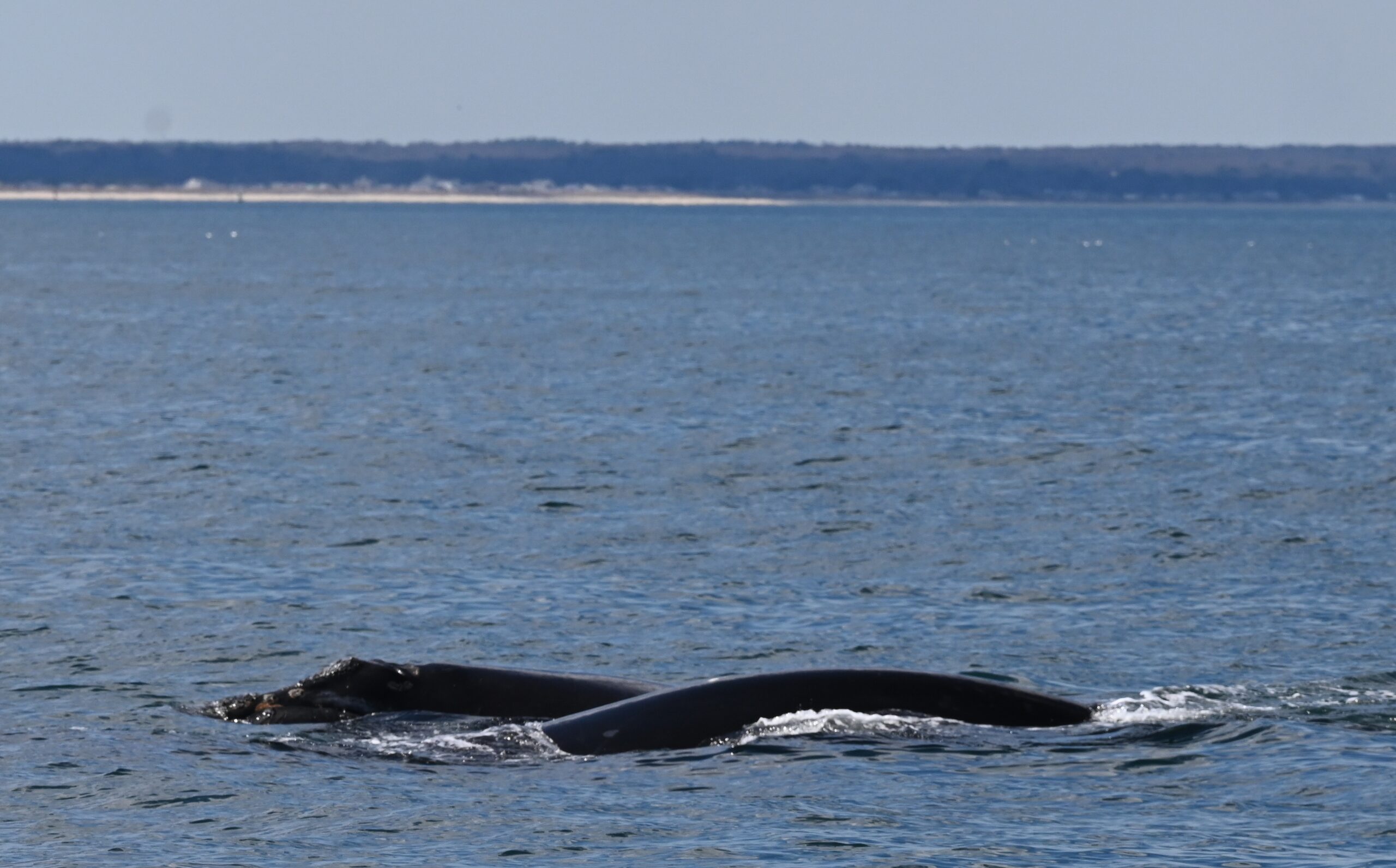
BOSTON, MASS. (April 22, 2025) – Scientists from the New England Aquarium are drawing attention to the low number of North Atlantic right whales born this calving season while welcoming several females who gave birth for the first time, a sign of hope for this critically endangered species with a population hovering around 370 individuals.
The annual calving season in the southeastern United States, which runs from mid-November until mid-April, produced 10 mother-calf pairs with an 11th discovered just last week in Cape Cod Bay. This number is lower than scientists with the Anderson Cabot Center for Ocean Life at the New England Aquarium had hoped. Right whales are experiencing an Unusual Mortality Event precipitated by increased injuries and deaths from human impacts, which is affecting the animals’ ability to survive and reproduce.
“With past calf counts ranging from 39 to zero, we never know how any calving season will unfold. While the calf count is relatively low this year, I am encouraged by four new mothers being added to the reproductive pool,” said Philip Hamilton, Senior Scientist in the Aquarium’s Anderson Cabot Center. First-time mothers this year are “Accordion” (Catalog #4150), “Check Mark” (Catalog #3705), “Caterpillar” (Catalog #3503), and unnamed right whale Catalog #4540. (See the full list of this season’s mother-calf pairs here.)
“Three of this season’s first-time moms (Accordion, Check Mark, and Caterpillar) bear prominent scars—which became their namesake—from being struck by vessels. These injuries are a harsh reminder of their daily threats, and an additional hurdle to overcome on their journey to motherhood,” said Amy Warren, Scientific Program Officer in the Aquarium’s Anderson Cabot Center.
Aerial survey teams from Florida, Georgia, and the Carolinas conducted regular flights on the calving ground until April 15, at which point most of the right whales had migrated north. At least seven of the 11 mother-calf pairs have been seen in Massachusetts waters this spring. An aerial survey team from the Center for Coastal Studies discovered the 11th mother of the season, “Monarch” (Catalog #2460), on April 17 in Cape Cod Bay. Researchers from the Aquarium’s Anderson Cabot Center and Northeast Fisheries Science Center who were conducting boat-based field work that day were able to gather a biological sample from the calf, which allows scientists at St. Mary’s University in Halifax, NS, to genetically identify the individual for future comparisons and potentially allow for the calf’s father to be determined, among other analyses.
Two of this season’s new mothers were also seen for the first time in unexpected waters. In February, an aerial survey team from Northeast Fisheries Science Center sighted Accordion and her calf off the coast of New Jersey, far outside the traditional calving ground. Catalog #4540 was sighted by a team from HDR Inc. off Virginia in December. While not frequent, such first sightings of mothers and calves outside of the southeastern calving grounds are not surprising. Last year, HDR Inc. had the first sighting of “Pico” (Catalog #3270) and her calf off the Virginia coast in June, and Monarch and her calf were first seen recently in Cape Cod Bay. Researchers won’t know the final calf count until the end of the year given the possibility of yet more new calf discoveries during the spring and summer.
Another right whale this season, “Grand Teton” (Catalog #1145), who is at least 44 years old and one of the most prolific females in the North Atlantic right whale population, was seen with a new calf off Florida in January. She has now given birth to at least nine calves, playing a particularly important role for the critically endangered species that has just 70 reproductive females estimated to be remaining in the population.
“Whales like Grand Teton give me hope for the species. She has been calving for over four decades, and unlike the majority of the population, remains relatively free of scars from past entanglements. The future of the species hangs on females like her,” Hamilton said.
For decades, the whales’ sightings and histories have been tracked using the North Atlantic Right Whale Catalog, an extensive photo-identification database curated by scientists at the Aquarium’s Anderson Cabot Center. Individual North Atlantic right whales are distinguished by photographs of the natural markings on their head, called callosities, as well as scars on their bodies. Because calves’ callosities take months to develop, they are generally identified and tracked in the first year by their close association with their mothers.
The New England Aquarium has been studying North Atlantic right whales, one of the world’s most endangered large whale species, for more than 40 years. To raise awareness about the plight of right whales, the Aquarium will be marking Massachusetts Right Whale Day on April 24 with scientists and guest speakers, activities, and educational programming. More information can be found here.
MEDIA CONTACT: Pam Bechtold Snyder—617-686-5068; psnyder@neaq.org
